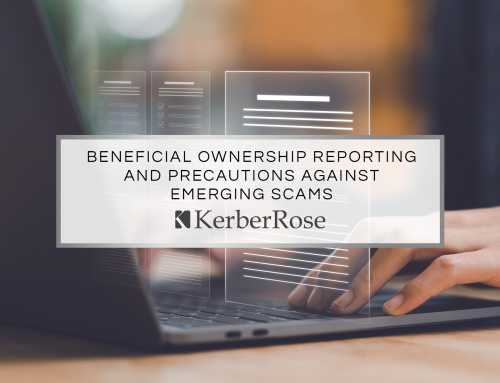Electric Vehicle Tax Credit
More Cars Eligible for the Qualified Plug-in Electric Vehicles (PEV) Tax Credit
Recently, the IRS added a handful of vehicles to the list of those eligible for a tax credit called the Qualified Plug-In Electric Drive Motor Vehicles Credit. If you purchase one of these eligible cars, you can receive a federal tax credit up to $7,500. Read on for more information about this electric vehicle tax credit and which vehicles are eligible.
How Does the Credit Work?
The Internal Revenue Code Section 30D includes a credit for Qualified Plug-in Electric Motor Vehicles. These vehicles include plug-in electric passenger vehicles and light trucks purchased after 12/31/2009. The credit is based on: battery capacity which exceeds standardized minimum, uses an external source of energy to recharge the battery, has a gross vehicle weight rating of up to 14,000 pounds and meets specified emission standards.
Some plug-in vehicles qualify for a smaller tax credit than others. The credit amounts to $2,500 for a vehicle which runs on propulsion energy from a battery with at least five kilowatt-hours of capacity. An additional $417 dollars is added for each kilowatt-hour of battery capacity in excess of five kilowatt-hours. The maximum amount allowed for the credit is $7,500.
Once the manufacturer of an eligible vehicle sells 200,000 of those vehicles in the United States, the credit begins to phase out. When this milestone is reached, the credit is reduced by half and then by half again over a period of months until the allowable credit is reduced to nothing. This explains why plug-in cars manufactured by companies like Tesla are no longer eligible. Tesla sold its 200,000th vehicle in 2018; the credit fully expired at the end of 2019.
Due to the increased demand from consumers for more sustainable vehicles, and the resulting increase in supply from manufacturers, CEOs of GM, Ford and other automakers have recently urged Congress to lift the electric vehicle tax credit cap. The automakers argue the credit is crucial to reduce the costs of electric vehicles, saying it bolsters public interest in what is still considered an early-stage technology. Proposed legislation (as of June 2022) seeks to do away with the 200,000 phaseout threshold and add additional tax credits for new plug-in vehicle purchases.
Eligibility and New Cars
To receive the credit, you must purchase a battery-electric or plug-in hybrid car manufactured after 12/31/2009 as a new vehicle. Leasing or purchasing a used vehicle makes you ineligible. Additionally, the car must be included on the IRS’s list of those eligible for the Qualified Plug-In Electric Drive Motor Vehicles Credit.
The IRS recently announced a list of new eligible vehicles (all are 2023 models):
- Hyundai Genesis GV60
- Jaguar I-Pace (HSE)
- Land Rover Range Rover SE PHEV
- Land Rover Range Rover Sport Autobiography PHEV
- MINI Cooper SE Hardtop
- Subaru Solterra
Visit the IRS website for a full list of eligible cars and credit amounts: https://www.irs.gov/businesses/irc-30d-new-qualified-plug-in-electric-drive-motor-vehicle-credit.
If you have any questions about how or if you can benefit from an electric vehicle tax credit, contact a KerberRose Trusted Advisor today.
Electric Vehicle Tax Credit
More Cars Eligible for the Qualified Plug-in Electric Vehicles (PEV) Tax Credit
Recently, the IRS added a handful of vehicles to the list of those eligible for a tax credit called the Qualified Plug-In Electric Drive Motor Vehicles Credit. If you purchase one of these eligible cars, you can receive a federal tax credit up to $7,500. Read on for more information about this electric vehicle tax credit and which vehicles are eligible.
How Does the Credit Work?
The Internal Revenue Code Section 30D includes a credit for Qualified Plug-in Electric Motor Vehicles. These vehicles include plug-in electric passenger vehicles and light trucks purchased after 12/31/2009. The credit is based on: battery capacity which exceeds standardized minimum, uses an external source of energy to recharge the battery, has a gross vehicle weight rating of up to 14,000 pounds and meets specified emission standards.
Some plug-in vehicles qualify for a smaller tax credit than others. The credit amounts to $2,500 for a vehicle which runs on propulsion energy from a battery with at least five kilowatt-hours of capacity. An additional $417 dollars is added for each kilowatt-hour of battery capacity in excess of five kilowatt-hours. The maximum amount allowed for the credit is $7,500.
Once the manufacturer of an eligible vehicle sells 200,000 of those vehicles in the United States, the credit begins to phase out. When this milestone is reached, the credit is reduced by half and then by half again over a period of months until the allowable credit is reduced to nothing. This explains why plug-in cars manufactured by companies like Tesla are no longer eligible. Tesla sold its 200,000th vehicle in 2018; the credit fully expired at the end of 2019.
Due to the increased demand from consumers for more sustainable vehicles, and the resulting increase in supply from manufacturers, CEOs of GM, Ford and other automakers have recently urged Congress to lift the electric vehicle tax credit cap. The automakers argue the credit is crucial to reduce the costs of electric vehicles, saying it bolsters public interest in what is still considered an early-stage technology. Proposed legislation (as of June 2022) seeks to do away with the 200,000 phaseout threshold and add additional tax credits for new plug-in vehicle purchases.
Eligibility and New Cars
To receive the credit, you must purchase a battery-electric or plug-in hybrid car manufactured after 12/31/2009 as a new vehicle. Leasing or purchasing a used vehicle makes you ineligible. Additionally, the car must be included on the IRS’s list of those eligible for the Qualified Plug-In Electric Drive Motor Vehicles Credit.
The IRS recently announced a list of new eligible vehicles (all are 2023 models):
- Hyundai Genesis GV60
- Jaguar I-Pace (HSE)
- Land Rover Range Rover SE PHEV
- Land Rover Range Rover Sport Autobiography PHEV
- MINI Cooper SE Hardtop
- Subaru Solterra
Visit the IRS website for a full list of eligible cars and credit amounts: https://www.irs.gov/businesses/irc-30d-new-qualified-plug-in-electric-drive-motor-vehicle-credit.
If you have any questions about how or if you can benefit from an electric vehicle tax credit, contact a KerberRose Trusted Advisor today.
Electric Vehicle Tax Credit
More Cars Eligible for the Qualified Plug-in Electric Vehicles (PEV) Tax Credit
Recently, the IRS added a handful of vehicles to the list of those eligible for a tax credit called the Qualified Plug-In Electric Drive Motor Vehicles Credit. If you purchase one of these eligible cars, you can receive a federal tax credit up to $7,500. Read on for more information about this electric vehicle tax credit and which vehicles are eligible.
How Does the Credit Work?
The Internal Revenue Code Section 30D includes a credit for Qualified Plug-in Electric Motor Vehicles. These vehicles include plug-in electric passenger vehicles and light trucks purchased after 12/31/2009. The credit is based on: battery capacity which exceeds standardized minimum, uses an external source of energy to recharge the battery, has a gross vehicle weight rating of up to 14,000 pounds and meets specified emission standards.
Some plug-in vehicles qualify for a smaller tax credit than others. The credit amounts to $2,500 for a vehicle which runs on propulsion energy from a battery with at least five kilowatt-hours of capacity. An additional $417 dollars is added for each kilowatt-hour of battery capacity in excess of five kilowatt-hours. The maximum amount allowed for the credit is $7,500.
Once the manufacturer of an eligible vehicle sells 200,000 of those vehicles in the United States, the credit begins to phase out. When this milestone is reached, the credit is reduced by half and then by half again over a period of months until the allowable credit is reduced to nothing. This explains why plug-in cars manufactured by companies like Tesla are no longer eligible. Tesla sold its 200,000th vehicle in 2018; the credit fully expired at the end of 2019.
Due to the increased demand from consumers for more sustainable vehicles, and the resulting increase in supply from manufacturers, CEOs of GM, Ford and other automakers have recently urged Congress to lift the electric vehicle tax credit cap. The automakers argue the credit is crucial to reduce the costs of electric vehicles, saying it bolsters public interest in what is still considered an early-stage technology. Proposed legislation (as of June 2022) seeks to do away with the 200,000 phaseout threshold and add additional tax credits for new plug-in vehicle purchases.
Eligibility and New Cars
To receive the credit, you must purchase a battery-electric or plug-in hybrid car manufactured after 12/31/2009 as a new vehicle. Leasing or purchasing a used vehicle makes you ineligible. Additionally, the car must be included on the IRS’s list of those eligible for the Qualified Plug-In Electric Drive Motor Vehicles Credit.
The IRS recently announced a list of new eligible vehicles (all are 2023 models):
- Hyundai Genesis GV60
- Jaguar I-Pace (HSE)
- Land Rover Range Rover SE PHEV
- Land Rover Range Rover Sport Autobiography PHEV
- MINI Cooper SE Hardtop
- Subaru Solterra
Visit the IRS website for a full list of eligible cars and credit amounts: https://www.irs.gov/businesses/irc-30d-new-qualified-plug-in-electric-drive-motor-vehicle-credit.
If you have any questions about how or if you can benefit from an electric vehicle tax credit, contact a KerberRose Trusted Advisor today.




